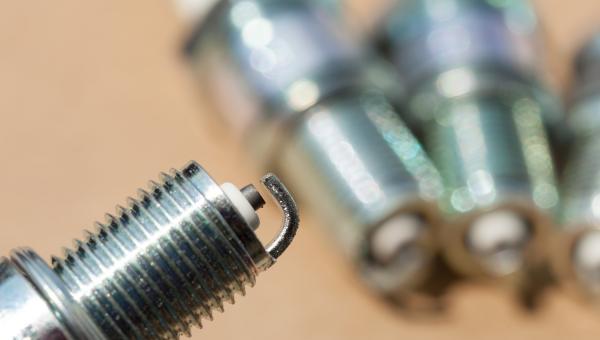Test Drive Notes Library
-
 Pros
Pros
- Time for an upgrade. If you have a previous generation Leaf, it’s time to trade up for the new one. It’s better in every way, significantly so. It’s more spacious, better appointed, with increased range. And not insignificantly, the exterior had some much needed plastic surgery and you no longer have to cover it in a burlap bag when you drive in public.
- Range. The new Leaf Plus gets about 230 miles per charge with its new, optional 62kW battery. Simply put, that’s enough for 99% of us. That’s essentially a tank of gas. So you can go several days or even a week of normal, everyday commuter driving before needing a full charge. Of course, you’ll be plugging in at night, or at work, so that’s largely irrelevant. But with 230 miles of charge, you can even go from Boston to New York now. Or from San Francisco to Sacramento and back without charging. This is pretty close to the magic number where range anxiety disappears. When it gets to 350 and you can drive from SF to LA, or NY to DC, the whole issue of range will disappear entirely, and you’ll no longer see us talking about it in our reviews. We’re getting close.
- Space. The new Leaf is bigger, airier, and more comfortable than the old Leaf. It feels taller, which makes getting in and out a breeze. It feels spacious up front, and there’s plenty of room for two adults in the back. The hatchback makes the Leaf a versatile vehicle for people with baby stuff, dogs, or gear.
- Interior. The updated interior is rather simple, but well-put-together. Fit and finish are good. Inside, it’s notably quiet. You’ll find everything you expect in a modern car, from an 8-inch touch screen to heated seats and steering wheel on higher trim levels. Apple Car Play and Android Auto are available. There’s no telescoping steering wheel, though, so make sure the driving position suits you before buying.
- Looks. OK, many people bought the old Leaf despite its looks. That may change now. The new Leaf is a handsome car, with none of the French different-to-be-different schtick that Nissan picked up from its partner, Renault. It looks almost like a small Crossover. It’s similar to the Chevy Bolt, one of its prime competitors. At minimum, we can say that the Leaf’s looks are no longer an impediment to falling in love with it.
- Standard safety. Automatic emergency braking, city and highway, are standard, as is forward collision warning. The SL trim adds the all-important blind spot monitoring and pedestrian detection. Shouldn’t pedestrians chip in to pay for that? Leave a bucket hanging from your side mirror and ask for donations. Pro-pilot assist adds adaptive cruise control with some limited self-driving features.
- Charging port location. The charging port is right in front, at the nose of the car. That seems to us like a particularly good place to put it. Because parking. Unlike a gas pump, which you pull up next to, a charging station is usually at the curb, where the nose of your car ends up. So why not put the charging port there? Brilliant!
- One pedal option. Some people like to drive with one pedal—where the car decelerates hard when you lift your foot off of the accelerator. We still haven’t gotten used to it. Thankfully, Nissan provides you with the option. We’ll take two pedals, please.
-
 Cons
Cons
- Dull driver. It’s possible to get pleasure from knowing you’re helping the planet by driving an electric vehicle. But that’s about all the pleasure you’ll get when driving the Leaf. It drives very much like an appliance. It works perfectly, but there’s no sense of exhilaration along the way. It’s quick enough, stable enough, and comfortable enough. But it’s heavy, and even though the batteries are down low to help with its center of gravity, turning is something the Leaf does out of obligation. The body rolls a bit in turns, making it not a fun car to drive. A little more suspension would do wonders for the Leaf. It doesn’t feel light on its feet, like say, a Honda Civic does. But it does the job. And for those who believe a car IS an appliance—a mechanical servant to get you from one place to another comfortably, safely, and while doing the least amount of damage to the environment, the Leaf will provide happiness.
- Braking felt long. The Leaf is heavy, and we felt like it was constantly harping on us to remember that Newton law about things in motion wanting to stay in motion. Everything worked, but we felt the weight of the car when we braked. It felt like it would have preferred to keep going.
- Long charge times. If you’re planning on using your standard, household 120 volt outlet to charge the Leaf, plan to leave it plugged in for a long, long time. You might want to reread Rip Van Winkle. We charged it up every night, and adding the 30 or 40 miles we used each day was no problem. But if you’re charging up regularly from scratch, plan to invest in a high-capacity charger. At the very least, install a 240V outlet and make use of Nissan’s included 240V charging cable.
- Visibility. The Leaf has thick A-pillars. Those are the pillars on either side of the windshield. They create blind spots, which can be troublesome in intersections. Good thing the Leaf SL has automatic emergency braking with pedestrian detection!
- Backup sound. Because electric cars don’t have internal combustion engines to make noise, they have to create artificial noises to alert pedestrians that "there’s a freakin’ car in front of you, dude!” Each manufacturer is left to choose its own artificial noise. Someday, perhaps we’ll be allowed to choose our own noises (cue the flatulence, boys). The sound Nissan chose for the Leaf is a vaguely sci-fi synthesizer-esque whorl that feels like it’s trying too hard to be futuristic. We’d prefer a recording of James Earl Jones saying, “Hey, Jamoke, look up from your phone. You’re about to get run over."
Test Drive Notes Library
Get the Car Talk Newsletter
 Pros
Pros Cons
Cons


